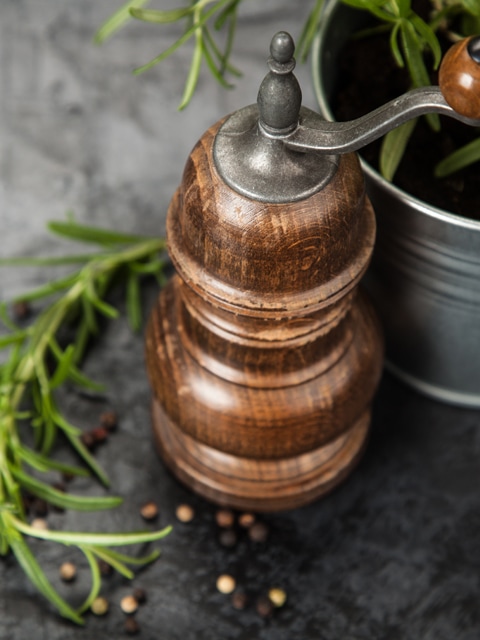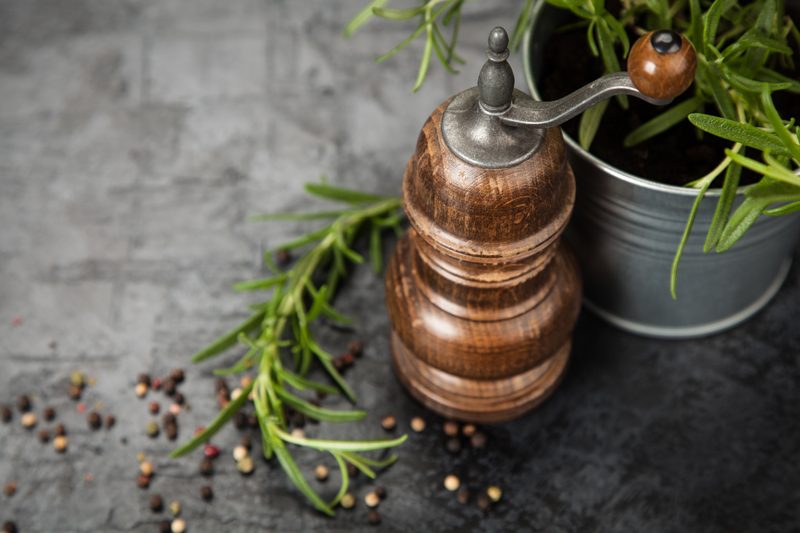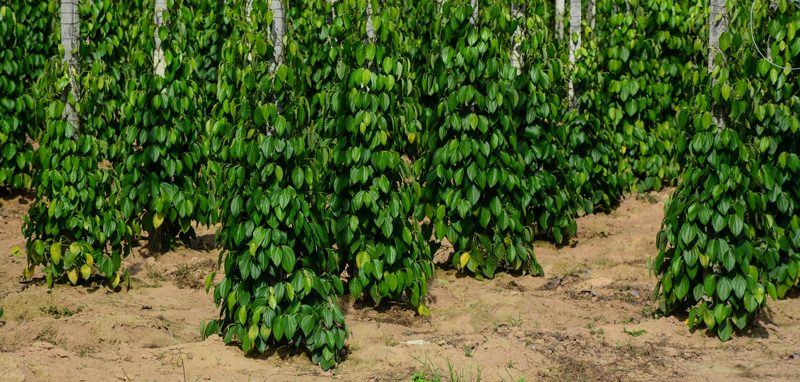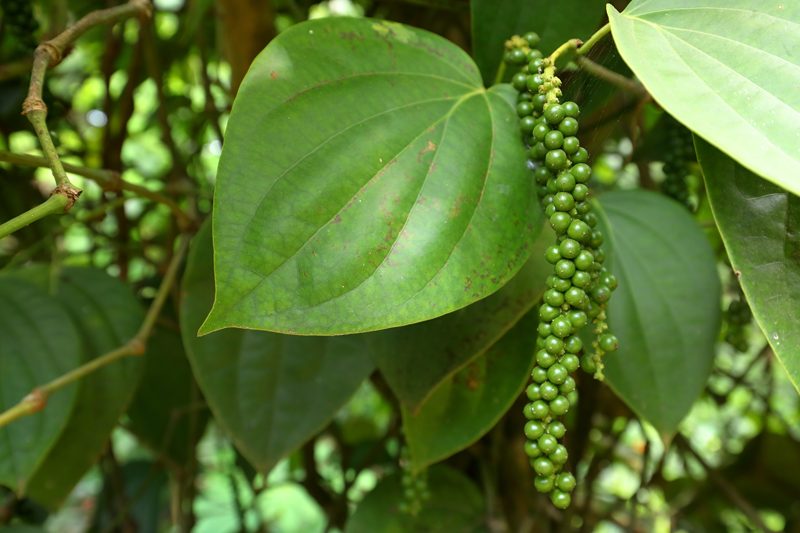


 Add to favorites
Add to favorites
I can’t say that I have many memories of spices as I was growing up but black pepper does stand out. I was just a little girl, small enough to sit on the floorboard of the car… back in the day when seatbelts weren’t used (the horror). Mom and I were on a long road trip and we swung into McDonald’s for some traveling food (the horror once again). As I repositioned myself on the floorboard, I moved my coloring book and crayons out of the way to spread out my Happy Meal.

In the bottom of the bag, I found a little package of salt and black pepper. I opened the salt and sprinkled it on my fries. I wasn’t too familiar with the other package, but I tore it open and took a deep sniff. Within seconds, I was sneezing like crazy. Each sneeze made me giggle, and each giggle made me sniff more black pepper. That was the highlight of our trip. I am going to advise against sniffing black pepper.
Whereas most spices live tucked away in dark cupboards, black pepper proudly demands prime real estate on the kitchen counter housed in anything from plain Jane to fancy shakers and grinders. Do you know where that pepper actually comes from (besides the grocery store)? Today, global black pepper consumption is estimated to be about 400,000 tons per year. This prized spice stimulates salivation and the production of gastric juices and is a revered food flavoring throughout the world.

Black peppercorns grow on the Piper nigrum L. vine, mainly around the Equator in India, Indonesia, Sarawak, Malaysia, and Brazil. The vines can grow up to 30 feet, therefore they are either staked or they may attach itself to nearby trees for support. They’re picked when still green on the vine, and turn black when oxidized during the drying process. They are actually the fruits of a flowering vine in the Piperaceae family. The green, wide-leafed vines grow long tendrils where cylindrical clusters (drupe of the vine (a fruit with a single seed) of the berries ripen. The fruits are picked at varying degrees of ripeness depending on the strength and type of pepper desired and then processed accordingly.
Pepper gets their telltale spicy heat mostly from piperine derived both from the outer fruit and the seed. Once ground, pepper’s aromatics can evaporate quickly. It is recommended to grind whole peppercorns immediately before use for this reason. Handheld pepper mills or grinders, which mechanically grind or crush whole peppercorns, are used for this.

A pepper plant takes four years to mature but can be harvested for seven years afterward. If the berries were allowed to ripen fully, they would turn red but instead, they are usually harvested when they are green. Harvesting is typically done without any mechanical equipment. I will go a bit deeper into this stage down below.
The peppercorn plant is a tropical plant cultivated for its black, white and red peppercorns. The three colors of peppercorn are simply different stages of the same peppercorn. Black peppercorns are the dried immature fruit or drupes of the peppercorn plant while white pepper is made from the inner portion of the mature fruit. Some people mistakenly group pink peppercorns in here, but pink peppercorns, originating in Peru, have no relation to black pepper. (1)
There is so much to learn about our food source and I am so thankful that we have the resources at our fingertips to learn where and how they end up in our grocery stores. I hope you enjoyed this little snippet regarding black pepper. blessings, amie sue